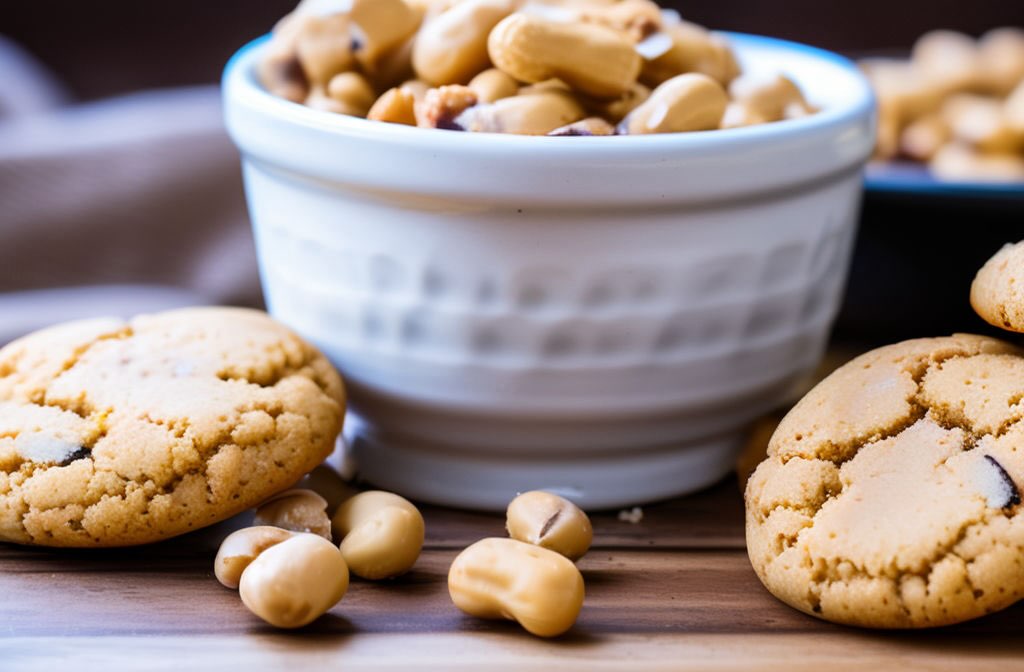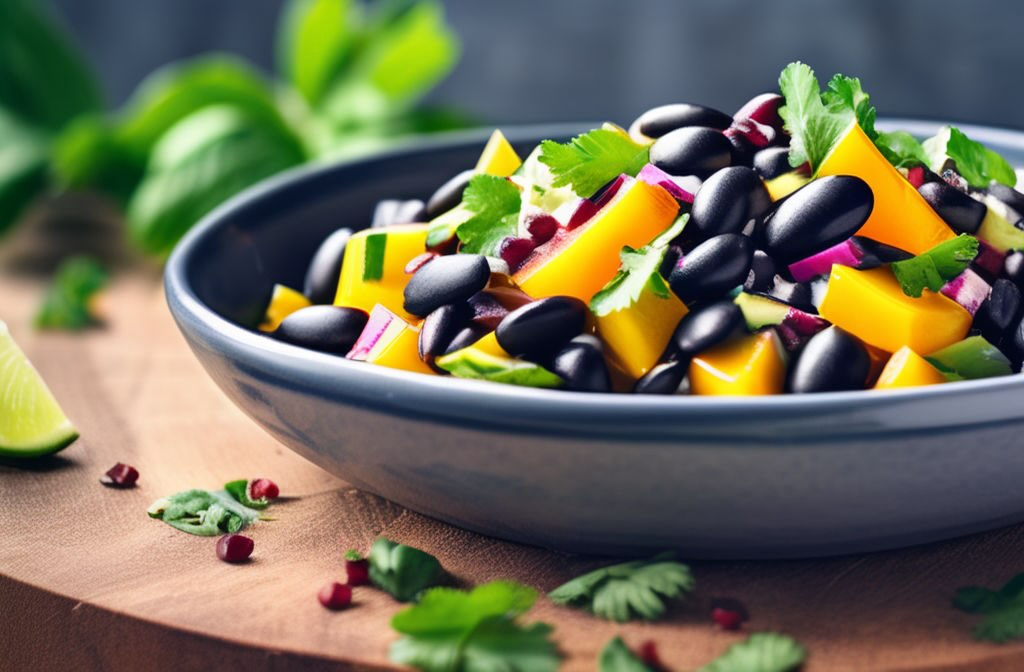Low Sodium Recipes
Embracing a low-sodium diet is a crucial step towards maintaining a healthy heart and preventing high blood pressure. However, reducing salt intake doesn't mean sacrificing flavor. With the right combination of fresh ingredients and creative cooking, you can enjoy delicious meals that are both nourishing and low in sodium. To inspire your culinary journey, we present two delightful recipes: a vibrant Black Bean Mango Salad and wholesome Peanut Butter Quinoa Cookies. These dishes are not only easy to prepare but also packed with nutrients, offering a perfect blend of taste and health benefits.
The Role of Sodium in the Body
Sodium, an essential mineral found predominantly in salt, plays critical roles in the body, including:
- - Fluid Balance: Sodium helps regulate the balance of fluids in and around your cells, ensuring your body's hydration levels remain stable.
- - Nerve Function: It is essential for the transmission of nerve impulses, which are vital for muscle contractions and communication between different parts of the body.
- - Blood Pressure Regulation: Sodium influences blood pressure through its effect on blood volume and vascular resistance.
Despite its essential roles, excessive sodium intake can lead to increased blood pressure, straining the heart and blood vessels. Over time, this strain can result in hypertension, heart disease, stroke, and kidney damage. Therefore, a low-sodium diet, reducing sodium intake to recommended levels, is advocated, especially for individuals with hypertension, heart conditions, or kidney issues, as well as those seeking to maintain overall health and wellness. A low-sodium diet, typically containing less than 2,300 mg of sodium per day, can help manage blood pressure and reduce the risk of cardiovascular diseases.
Who Can Benefit from a Low-Sodium Diet?
- - Individuals with Hypertension: For those already diagnosed with high blood pressure, a low-sodium diet can be particularly beneficial in managing and potentially reducing hypertension.
- - Heart Disease Patients: People with heart conditions, including heart failure, can find a low-sodium diet helpful in minimizing the risk of complications.
- - Risk of Kidney Disease: Those with chronic kidney disease or at risk for it may need to limit sodium intake to prevent further kidney damage.
- - Everyone: Even if you don't fall into these categories, adopting a lower sodium intake can contribute to overall cardiovascular health and wellness.
Low-Sodium Recipes for Heart Health
In light of sodium's impact on health, we've selected two delightful recipes that are not only low in sodium but also rich in nutrients: a Black Bean Mango Salad and Peanut Butter Quinoa Cookies.
1. Black Bean Mango Salad
This salad, containing only 13mg of sodium per serving, marries the robustness of black beans with the sweetness of mango, offering a dish rich in dietary fiber, vitamins, and minerals.
Ingredients:
- - ½ cup red onion
- - ¾ cup orange bell pepper
- - ¾ cup mango
- - 1 cup corn
- - 2 cups black beans
- - 4 tablespoons low-sodium vinaigrette
Directions:
- 1. Combine onion, bell pepper, mango, and corn in a large bowl.
- 2. Stir in black beans and dress with vinaigrette.
- 3. Chill before serving to enhance flavors or enjoy immediately at room temperature.
2. Peanut Butter Quinoa Cookies
With just 11mg of sodium per serving, these cookies are a heart-healthy way to enjoy a sweet treat. Quinoa adds a unique texture and a protein boost, making these cookies both delicious and nutritious.
Ingredients:
- - 2 tablespoons coconut oil
- - ¼ cup natural peanut butter
- - ¼ cup cooked quinoa
- - ¼ cup almond flour
- - ¼ cup chopped peanuts
Directions:
- 1. Mix coconut oil and peanut butter until smooth.
- 2. Fold in quinoa, almond flour, and peanuts to form a dough.
- 3. Shape into balls, press down slightly, and bake until golden.
Introducing the 7-Day Very-Low Sodium 1800 kCal Plan
For those looking to take a more structured approach to reduce sodium intake, we are excited to introduce our 7-Day Very-Low Sodium 1800 kCal Plan. This specialized dietary template is meticulously designed to meet the stringent guideline of less than 1,500 mg of sodium per day, aligning with recommendations for heart health and hypertension management.
What the Plan Offers:
- - High-Fiber Meals: Each meal is crafted to provide a rich source of dietary fiber, promoting digestive health and aiding in cholesterol management.
- - Low-Fat Options: Prioritizing low-fat ingredients helps support heart health and weight management, making each meal both satisfying and nutritious.
- - Diverse Menu: The plan features a variety of meals to ensure that your dietary journey is filled with flavor and excitement, eliminating the monotony often associated with specialized diets.
- - Easy-to-Follow Recipes: Simplicity is key in our meal plan, with straightforward recipes that make healthy eating accessible and enjoyable.
This 7-day plan is not just a diet; it's a heart-healthy journey, providing the tools needed to make informed, beneficial dietary choices. Whether you're managing specific health conditions or proactively seeking to improve your heart health, our Very-Low Sodium Plan is designed to support your goals without compromising on taste or nutritional value.
For more information and to embark on this heart-healthy journey, visit 7-Day Very-Low Sodium 1800 kCal Plan.

Conclusion
Adopting a low-sodium diet is a powerful step towards protecting your heart health. With recipes like our Black Bean Mango Salad and Peanut Butter Quinoa Cookies, and resources like our 7-Day Very-Low Sodium 1800 kCal Plan, embracing a heart-healthy diet can be both accessible and enjoyable. Take control of your health by making informed dietary choices, and embark on a journey to wellness that doesn't just benefit your heart but enhances your overall quality of life.
Disclaimer: This article is for informational purposes only and does not constitute medical advice. The content is not intended to be a substitute for professional medical advice, diagnosis, or treatment. Always seek the advice of your physician or other qualified health providers with any questions you may have regarding a medical condition or dietary changes.
References
1. Salt and sodium. (2023, June 13). The Nutrition Source. https://www.hsph.harvard.edu/nutritionsource/salt-and-sodium/
2. Low sodium diet and lifestyle changes for high blood pressure. (2022, September 12). Johns Hopkins Medicine. https://www.hopkinsmedicine.org/health/wellness-and-prevention/low-sodium-diet-and-lifestyle-changes-for-high-blood-pressure
3. World Health Organization: WHO. (2023, September 14). Sodium reduction. https://www.who.int/news-room/fact-sheets/detail/salt-reduction
4. Suckling RJ, Swift PA. The health impacts of dietary sodium and a low-salt diet. Clin Med (Lond). 2015 Dec;15(6):585-8. doi: 10.7861/clinmedicine.15-6-585. PMID: 26621954; PMCID: PMC4953267.
5. Low-salt dinner recipes | Good Food. (2023, April 14). https://www.bbcgoodfood.com/recipes/collection/low-salt-dinner-recipes
6. Low-sodium recipes. (2023, November 7). https://www.mayoclinic.org/healthy-lifestyle/recipes/low-sodium-recipes/rcs-20077197
7. How much sodium should I eat per day? (2024, January 5). www.heart.org. https://www.heart.org/en/healthy-living/healthy-eating/eat-smart/sodium/how-much-sodium-should-i-eat-per-day
8. Salt and sodium. (2023, June 13). The Nutrition Source. https://www.hsph.harvard.edu/nutritionsource/salt-and-sodium/
Ready to level-up?
Create meal plans 10x faster, follow up with your clients through our mobile app, and never struggle with meal planning or recipe management again.
